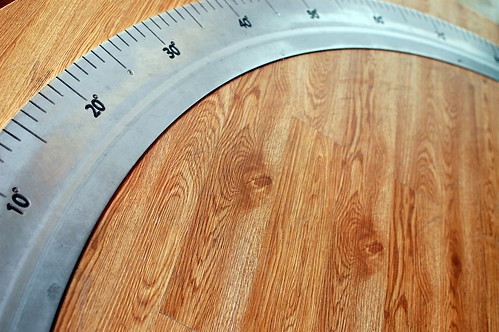 When I listen to clinicians, I sometimes have to wonder how Homo Sapiens ever survived the past 250,000 years. With the clinical minutiae that exist these days, it's a wonder that we haven't become extinct long before now.
When I listen to clinicians, I sometimes have to wonder how Homo Sapiens ever survived the past 250,000 years. With the clinical minutiae that exist these days, it's a wonder that we haven't become extinct long before now.
Walk into any of countless chiropractic, massage therapy, and physical therapy offices around the world, and you will hear the woeful tales of asymmetries and mal-alignments. You will hear of the maladies of the kinetic chain and the hypothetical relationships and regional interdependence from great toe to TMJ and all points in between. You will hear descriptions of two degrees of varus at the subtalar joint which, since it has been uncorrected for the past 40 years, has now created micro-trauma that has evolved into your back pain, your headaches, your arterial insufficiency, and your eyes being divergent.
I have no idea how we managed to survive the onslaught of those two degrees. I suspect the species is doomed. Who needs an ice age when the scourge of two degrees of varus is upon us?
As I am sure you have surmised by this point, I am really quite comfortable about the continued evolution of Homo Sapiens. No, I don't think we're going to be extinct any time soon unless it stems from man-made causes. Now THAT is quite possible.
I can't tell you the number of tales of woe that I have heard that have attempted to relate subtle yet long-standing anatomical variations to back pain, neck pain, headaches, and the like. I once had a patient tell me that their dentist - yes, their dentist - told them that their quadriceps weakness on one side was related to their TMJ pain.
Micromanaging asymmetries is like picking lottery numbers. Based on the statistical data contained within a normative population, you are as likely to be wrong as right. And there's that little problem of the 5 degrees of error in measurement, but I digress.
One thing that is forgotten in the meanderings of the mal-aligned: humans adapt to the imposed demands of their world. If we didn't, we would have some significant problems surviving the demands of the world around us. But, somehow, we do.
When provided with the correct mechanical loading, and given an appropriate environment in which to do so, the human body responds favorably. However, when given insufficient mechanical loading - as is the case with many exercise protocols - there is little to no change. There is nothing to adapt to, and thus there is no change noted - nor should we expect there to be.
This basic physiological premise, one that is critical to our survival on the planet, gets lost in the mix. In the vast majority of cases, treating an asymmetry that has no relationship to the onset of symptoms or loss of function is the gift that keeps on giving. It is something that will always merit attention, always demand treatment in some form or another, and always be a cash cow for the clinician in question. It will also always strike fear into the heart of the patient who thinks that their future sporting endeavors could be ultimately limited by those same two degrees of untreated varus, sacroiliac joint rotation, or similar entity.
Two degrees of varus isn't a deal breaker - the ability to adapt to the demands of living on planet earth is though. When will clinicians finally choose to get back to the basics of physiology as they pertain to things like survival on the planet?
Photo credits: Steve Snodgrass
 "Running Injuries: Etiology And Recovery- Based Treatment" (co-author Bridget Clark, PT) appears in the third edition and fourth editions of "Clinical Orthopaedic Rehabilitation: A Team Approach" by Charles Giangarra, MD and Robert C. Manske, PT.
"Running Injuries: Etiology And Recovery- Based Treatment" (co-author Bridget Clark, PT) appears in the third edition and fourth editions of "Clinical Orthopaedic Rehabilitation: A Team Approach" by Charles Giangarra, MD and Robert C. Manske, PT.
 Allan Besselink, PT, DPT, Ph.D., Dip.MDT has a unique voice in the world of sports, education, and health care. Read more about Allan here.
Allan Besselink, PT, DPT, Ph.D., Dip.MDT has a unique voice in the world of sports, education, and health care. Read more about Allan here.
 Top 5 finalist in three categories: "Best Overall Blog", "Best PT Blog" and "Best Advocacy Blog".
Top 5 finalist in three categories: "Best Overall Blog", "Best PT Blog" and "Best Advocacy Blog".